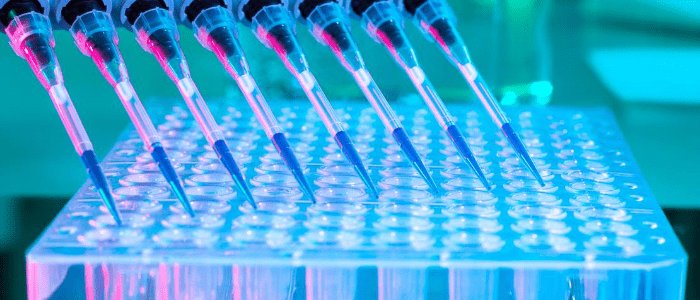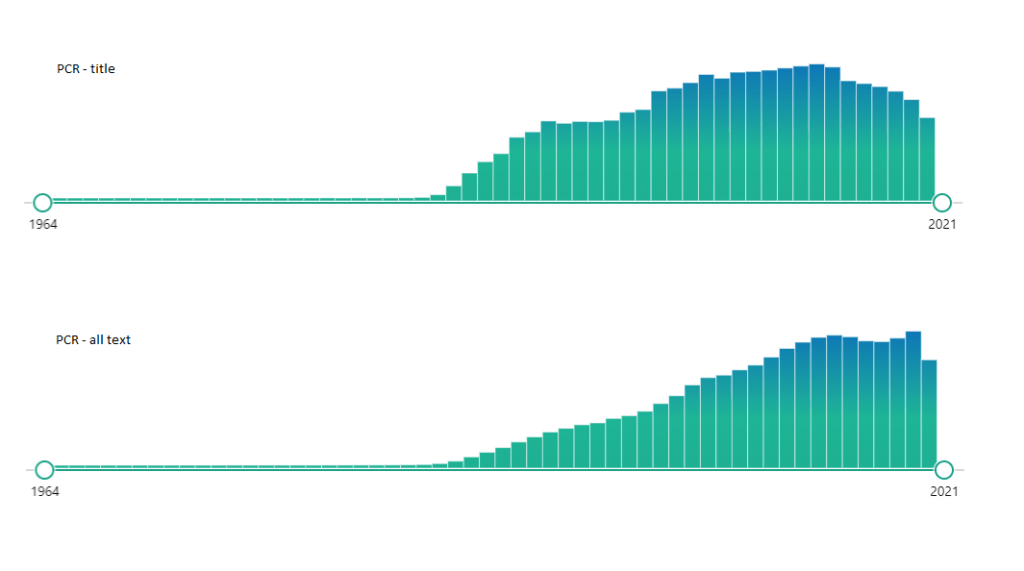PCR: king or squire?

With laboratory methods and diagnostics advancing apace, Francesca Lake considers whether PCR is likely to retain its crown as an essential lab method, or whether it could be replaced and consigned to the annals of history.
I was inspired by the renewed coverage of PCR owing to the COVID-19 pandemic, as well as by a Review recently published in BioTechniques [1], to delve into recent advances in this decades-old technique, and consider what lies ahead – has PCR development peaked? Will it be overtaken by some new method and consigned to history – as connoted by the ongoing hunt for diagnostic methods that improve on PCR during the current pandemic? Or will it continue to evolve, and remain a crucial technique to life scientists for decades to come?
A brief history of PCR
PCR was developed in the 1980s to overcome the challenges that arise with small DNA samples during sequencing. While it worked, the polymerase needed to be added for each cycle, making it tedious; however, automation and other improvements, such as the incorporation of Taq polymerase, have since led to it being a relatively simple process even a student – like myself during my Master’s degree – could do unsupervised.
Multiple versions of PCR now exist – including qPCR, ddPCR, RT-PCR, qRT-PCR and ePCR, to name but a few. Furthermore, PCR is now intrinsic to many disciplines – in particular forensics, diagnostics and molecular genetics. Of late, it has become well-known to the public owing to RT-PCR being the – albeit imperfect – gold standard for diagnosis of COVID-19.
The pros and cons of PCR
The hunt for diagnostic methods that improve on RT-PCR for the detection of the SARS-CoV-2 virus exemplifies the fact that PCR techniques still come with limitations. For SARS-CoV-2 detection, false negatives are a concern [2] and CRISPR- or RT-LAMP-based platforms are being trialed to provide results quicker.
What’s more, the need for thermal cycling makes it difficult to take PCR out of the lab and into the field or the clinic – LAMP skips this step, as could Cas9.
In other disciplines, effective PCR is limited by sample quality and make up – for example, crime scene samples can include compounds that inhibit PCR [3]; GC-rich samples can be problematic [4]; and given PCR is designed to work with tiny samples, sample contamination could be disastrous.
However, regardless of the above PCR is highly sensitive and simple to conduct, and its various iterations remain key to various fields – only one DNA sequencing platform is currently available that bypasses PCR, that of Oxford Nanopore (Oxford, UK).
PCR is also continually improving – for example, performing PCR in triplicate has been shown to be unnecessary with modern techniques [5], thus simplifying the procedure (although this needs validating in the various iterations of the PCR technique), and tweaks are being made to make various types of PCR easier and more reliable [6]. PCR is also being miniaturized, which would make the technique easier to perform outside of the lab, and cheaper. However, miniaturization is not a new concept and has proven challenging thus far [7].
Looking to the future of PCR as a lab method
While PCR is currently widely used, will it remain so? Will it become one of a suite of methods suitable for a particular niche, much like Sanger sequencing, or could it become eclipsed entirely? In their Review, Zhu et al. [1] note that it is likely to remain indispensable, at least in molecular diagnostics, with microfluidics (eventually) enabling the use of PCR for effective point-of-care (POC) diagnostics and on-site DNA profiling.
A quick search on PubMed (see Figure) suggests that the occurrence of PCR in the title of articles has begun to decline; however, it seems to be relatively stable when searched within the text itself. This albeit unscientific analysis implies that the technique is not dwindling in importance, but its evolution could have begun to slow.

For me, it feels like PCR is currently in a race to beat out other lab methods such as LAMP that could replace it in some important applications, like POC diagnostics, and its future as a ubiquitous method depends on which technique wins the race for simplicity, rapidity, reliability and cost in these new areas. Should it win, I can see a future where PCR is so simple it can be performed at home. However, it also feels entirely possible that a new, innovative technique could usurp PCR’s throne in important applications, thus consigning it to the background. Whatever happens, it does not appear that PCR will disappear any time soon.